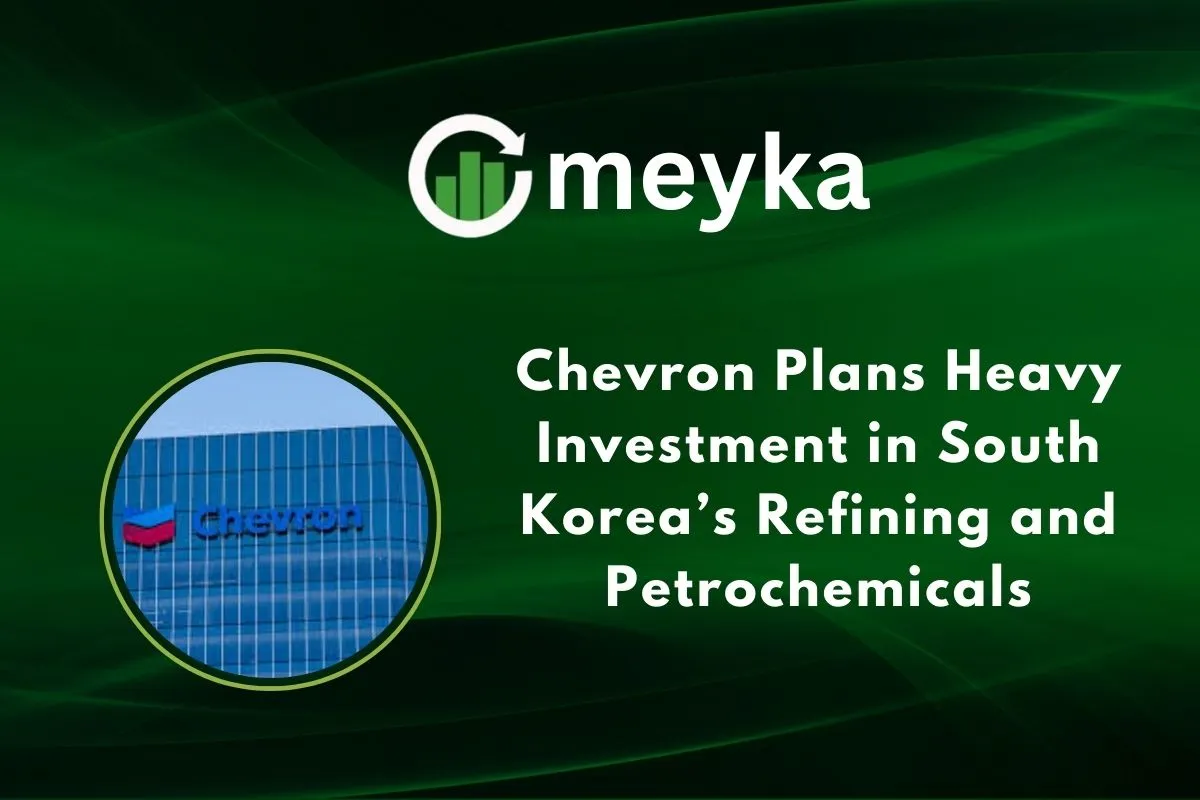Chevron Plans Heavy Investment in South Korea’s Refining and Petrochemicals
Chevron, a global energy leader, is significantly increasing its investments in South Korea’s refining and petrochemical industries. At the Asia Pacific Petroleum Conference (APPEC) in September 2025, Chevron’s President of International Downstream, Brant Fish, announced plans to go “investment heavy” in South Korea, focusing on petrochemical expansion and heavy oil upgrading. This strategic move underscores South Korea’s pivotal role in Chevron’s global operations and highlights the country’s importance in the energy sector.
Chevron’s Investment Plans
Chevron’s commitment to South Korea involves substantial investments aimed at enhancing refining capacities and expanding petrochemical production. The company plans to upgrade existing facilities and introduce advanced technologies to improve efficiency and output. These investments are expected to bolster Chevron’s position in the competitive Asian market and meet the growing demand for refined and petrochemical products.
South Korea’s Refining and Petrochemical Sector
South Korea boasts one of the world’s largest refining capacities, processing nearly 3.6 million barrels of oil daily. The country is a significant player in the global petrochemical industry, exporting a wide range of products to various markets. Chevron’s collaboration with GS Caltex, a top South Korean refinery, has played a key role in supporting its regional operations. GS Caltex operates the largest refinery in Chevron’s system, capable of processing 800,000 barrels of crude oil per day.
Economic and Industry Impacts
Chevron’s investment is expected to deliver significant economic benefits to South Korea. The expansion of refining and petrochemical operations is expected to create jobs, stimulate local economies, and enhance technological capabilities. Additionally, the increased production capacity will strengthen South Korea’s position in the global energy market, attracting further investments and fostering economic growth.
Environmental and Sustainability Considerations
Chevron is committed to sustainable practices in its refining and petrochemical operations. The company plans to implement advanced technologies to reduce emissions, improve energy efficiency, and minimize environmental impact. These initiatives align with global efforts to promote sustainability in the energy sector and demonstrate Chevron’s dedication to responsible operations.
Strategic and Geopolitical Implications
Chevron’s increased investment in South Korea strengthens its strategic position in Asia, a region with growing energy demands and economic significance. The move enhances Chevron’s ability to serve key markets and diversify its operations, reducing reliance on other regions. Geopolitically, the investment underscores the strong energy ties between the United States and South Korea, contributing to regional stability and energy security.
Conclusion
Chevron’s substantial investment in South Korea’s refining and petrochemical sectors marks a significant step in the company’s global strategy. The initiative promises to enhance production capabilities, stimulate economic growth, and promote sustainability in the region. As the energy landscape continues to evolve, Chevron’s commitment to South Korea underscores its dedication to meeting global energy demands through strategic partnerships and responsible operations.
FAQS:
Chevron faces challenges due to declining oil prices, reduced reserves, and a delayed $53 billion acquisition of Hess. These factors impact profits and future growth.
Yes, South Korea has several major oil refineries. They refine crude oil into products like gasoline and diesel fuel. The country ranks among the top five globally in refining capacity.
Ulsan is renowned for its shipyard and oil refinery. The city hosts Hyundai Heavy Industries and features the world’s third-largest oil refinery, operated by SK Energy.
Disclaimer:
This content is for informational purposes only and is not financial advice. Always conduct your research.






